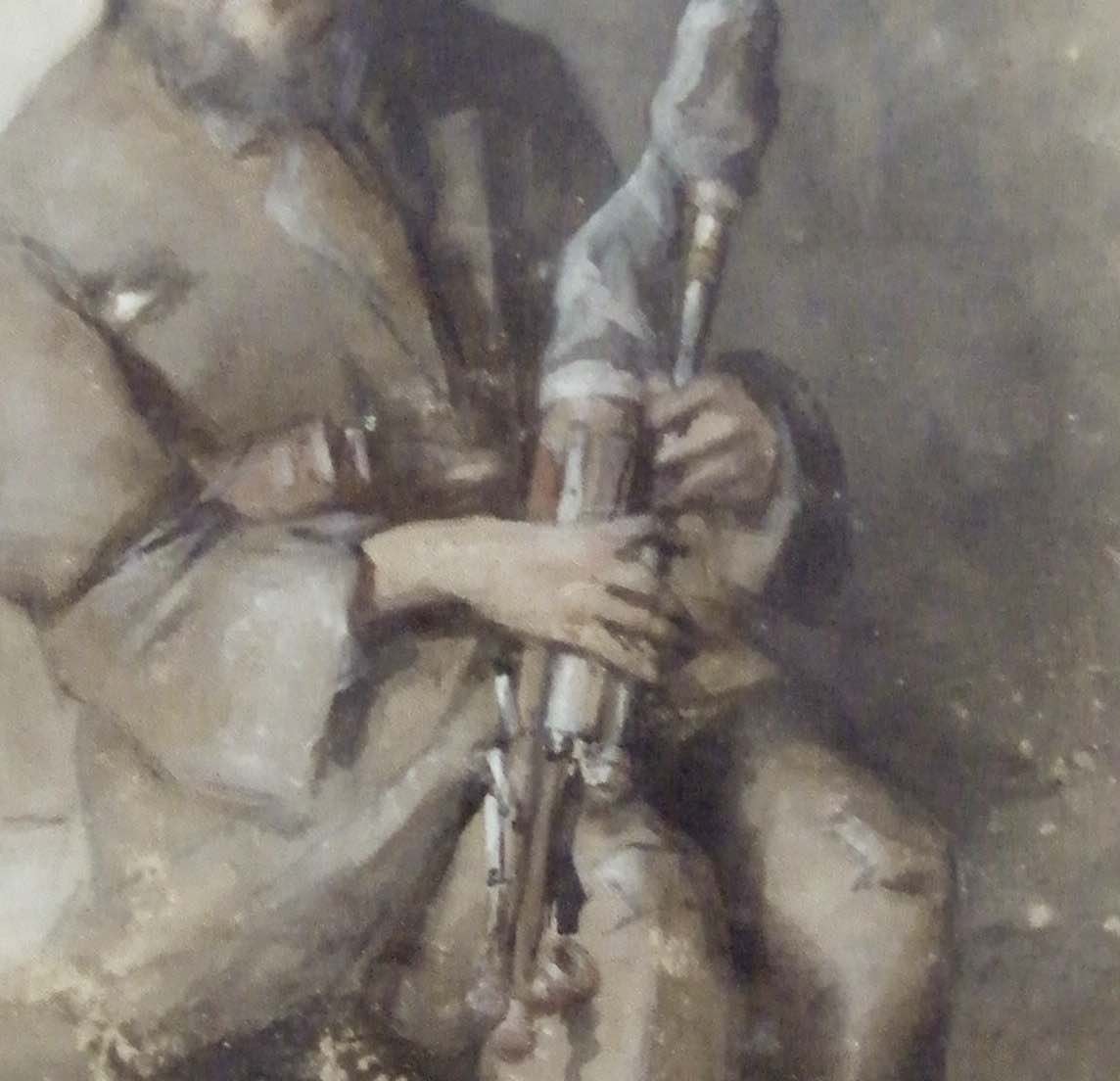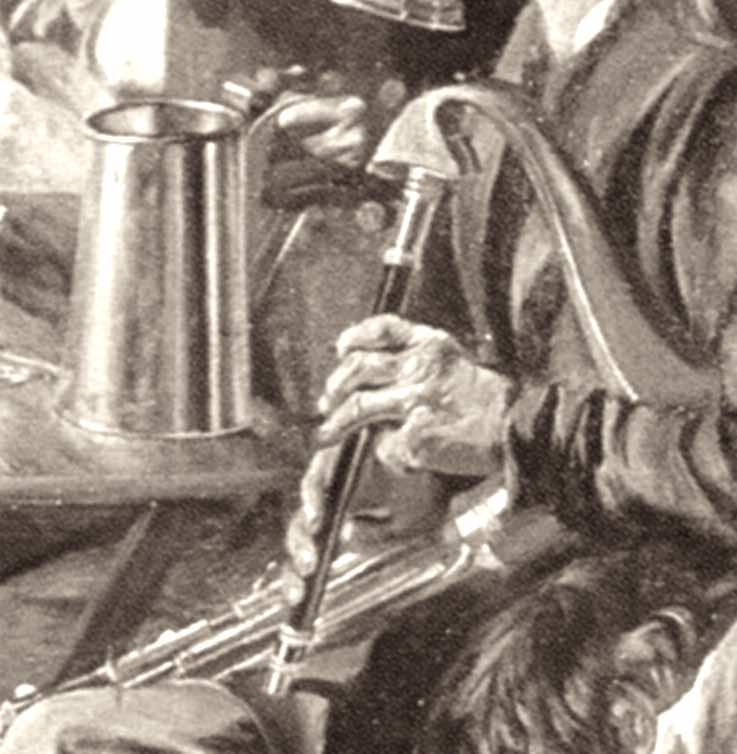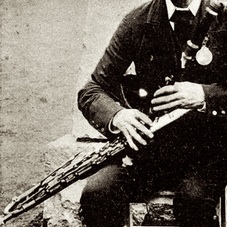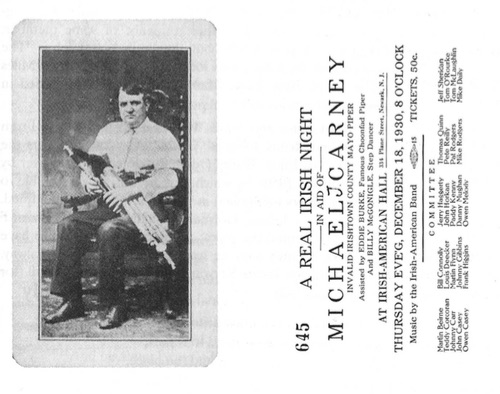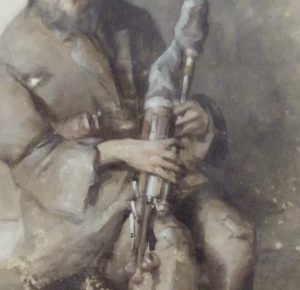
The Killeens of Ballyglass Ruairí Somers1
I have heard from the Killeens of Ballyglass several times of the great piper, Thomas Killeen. They invited me into their house and showed me his set of Uilleann pipes. These have all the signs of a long lifetime of usage, as long indeed as the piper himself. The chanter is in the key of ‘C sharp’ and has the name COLGAN stamped on it. The pipes have the usual three drones and three regulators.
Thomas Killeen was born probably between 1830 and 1840 in the village of Carrahall, a mile outside Ballyglass, Co Mayo. His father was a fairly well-off farmer (a warm farmer) and when two of his children, Thomas and Pat were born with very bad sight, he saw to it that they would be well trained in some occupation that would afford them a livelihood. Thomas was almost totally blind, being able only to notice the presence of a person between himself and sunlight – Pat had better sight and could read the newspaper, raised to within inches of his eyes. Pat was taught the piano and dancing and was to become a well-known dancing master – teaching in the Big Houses in that part of Mayo and North Galway. Thomas, known as Big Thomas, learned to play the Uilleann pipes. As a musician he is remembered even to this day as having been great, and the musicians of his day and for many succeeding decades learned and played his tunes. He was believed to have composed the ‘Lark in the Morning’ and there was a set of reels which were known under no other title but the Killeen Reels. Playing music was regarded in those days with a certain amount of suspicion, being closely akin to idleness, but Thomas and his brother Pat were completely exempt from this as they were considered professionals and music and dancing their trade.
Thomas was held in high regard by the local M.P., Moore, who was very aware of his attraction to the peasants of the time. At political rallies he would have been brought and paid by Moore for his presence and music. Indeed his esteem of Thomas was so high that when the Coercion Act was passed in 1881, Moore saw to it that the Act was amended and the restriction on the movements of the peasants at night lifted when it was for the specific purpose of attending the dancing and musical instruction of the Killeens. When Queen Victoria visited Ireland in 1900, Moore it was probably, who brought Thomas the piper to play for the Queen.
Thomas married Ann McGann from Ballina who was a very fine singer. She is known to have been particularly good at singing ‘An Chúilfhionn’. Thomas and Ann had five children. Of course both would have known and spoken Irish fluently – Irish then was overwhelmingly the language of the ordinary people.
Ann for the most part ran the affairs of the farm. When young Thomas grew up and took to selling cattle in the fairs and marts of the time, he would take his father with him who would then settle for a time in that neighbourhood playing music and teaching dancing. One of the factors which led to both Thomas and Pat’s long lives, for that time, was that neither took to drinking to any considerable extent, and this in the eyes of the community was noted and remembered to this day.
Thomas Killeen lived to be a very old man. My informant, Aid Prendergast remembers precisely the time of year and date of his death because his own granduncle arriving from America on a visit to his people found them all up at 5 o’clock in the morning. They were at the wake of Big Thomas. The time of the year was Spring, a month after the shipping strike in New York, the year 1906.
